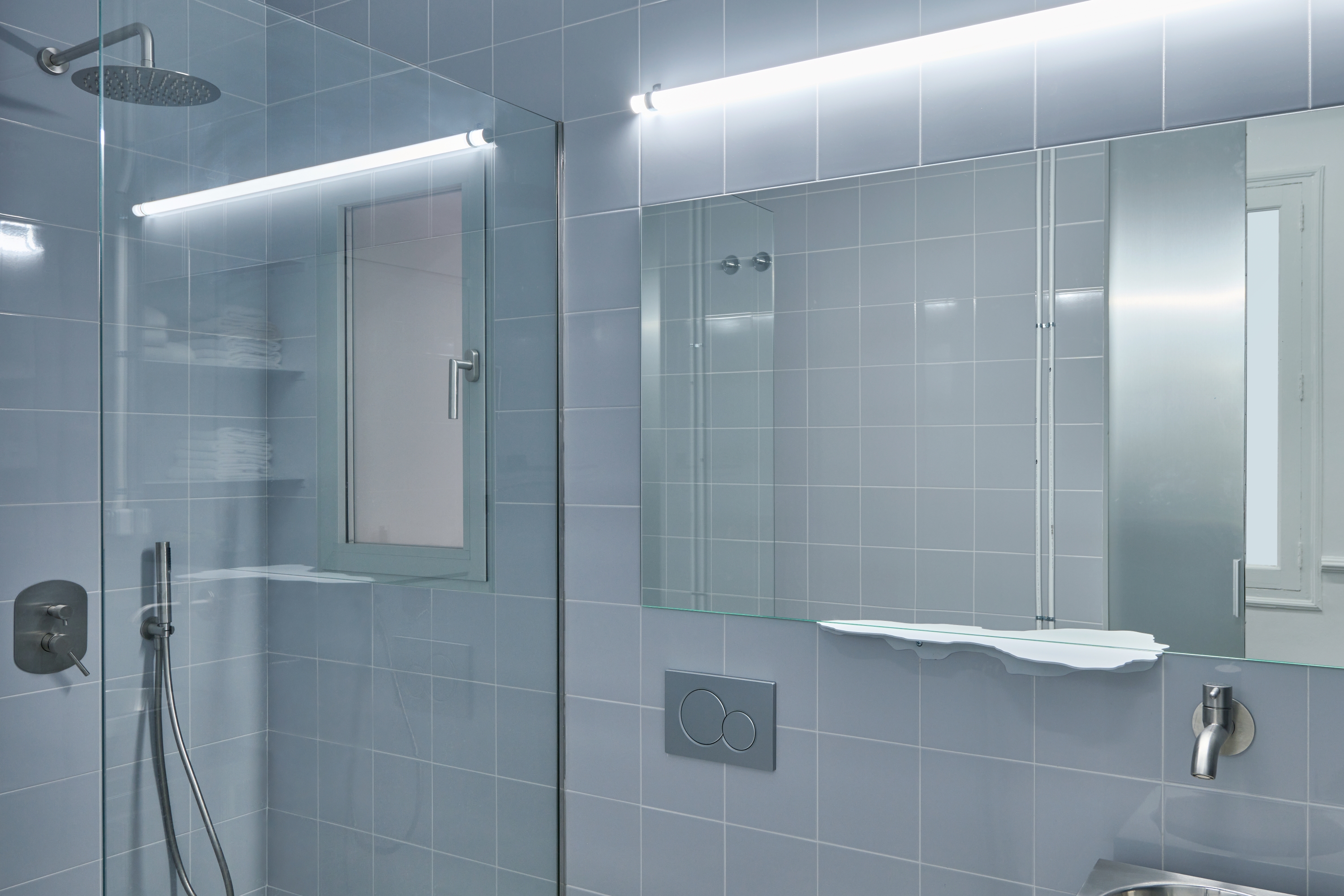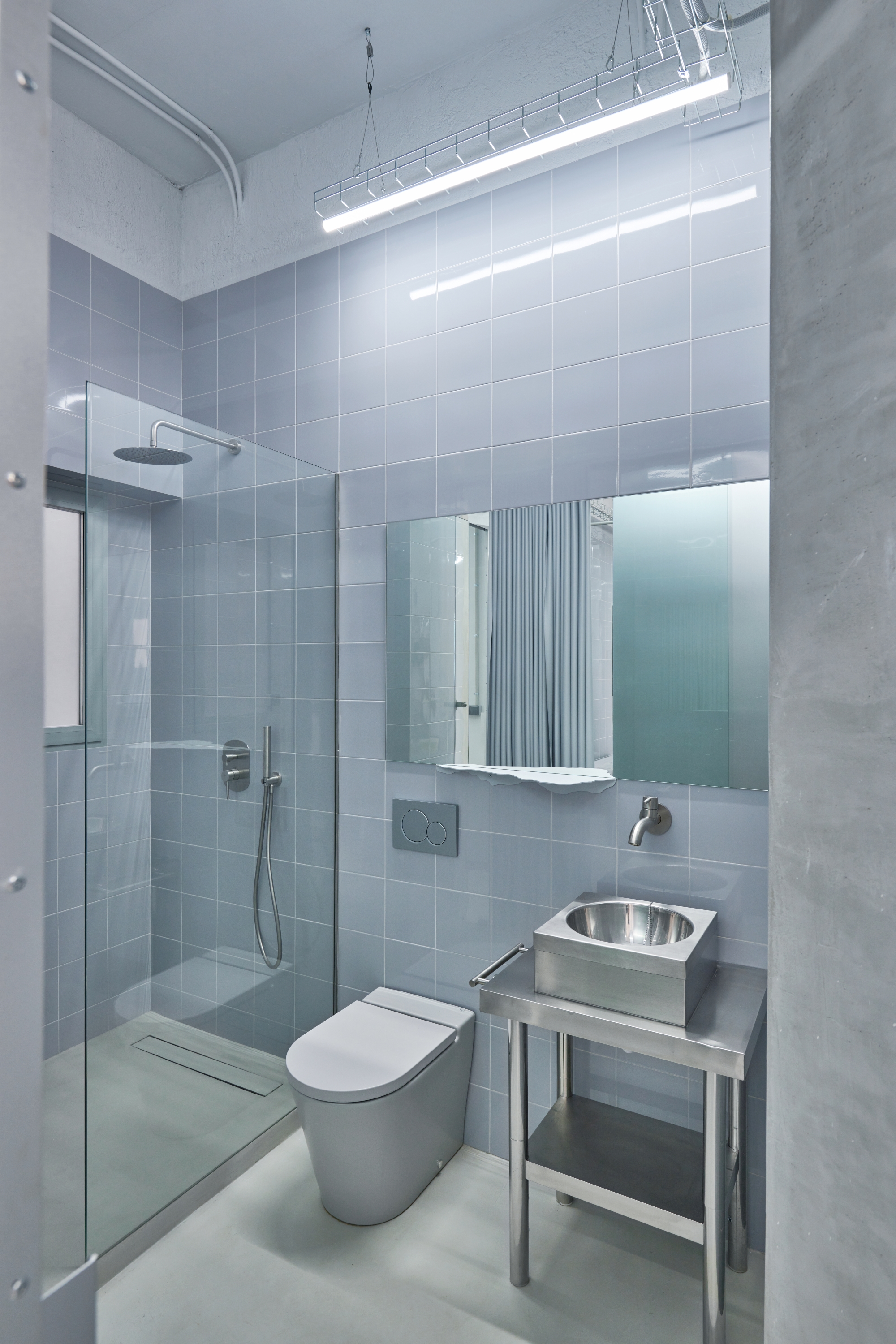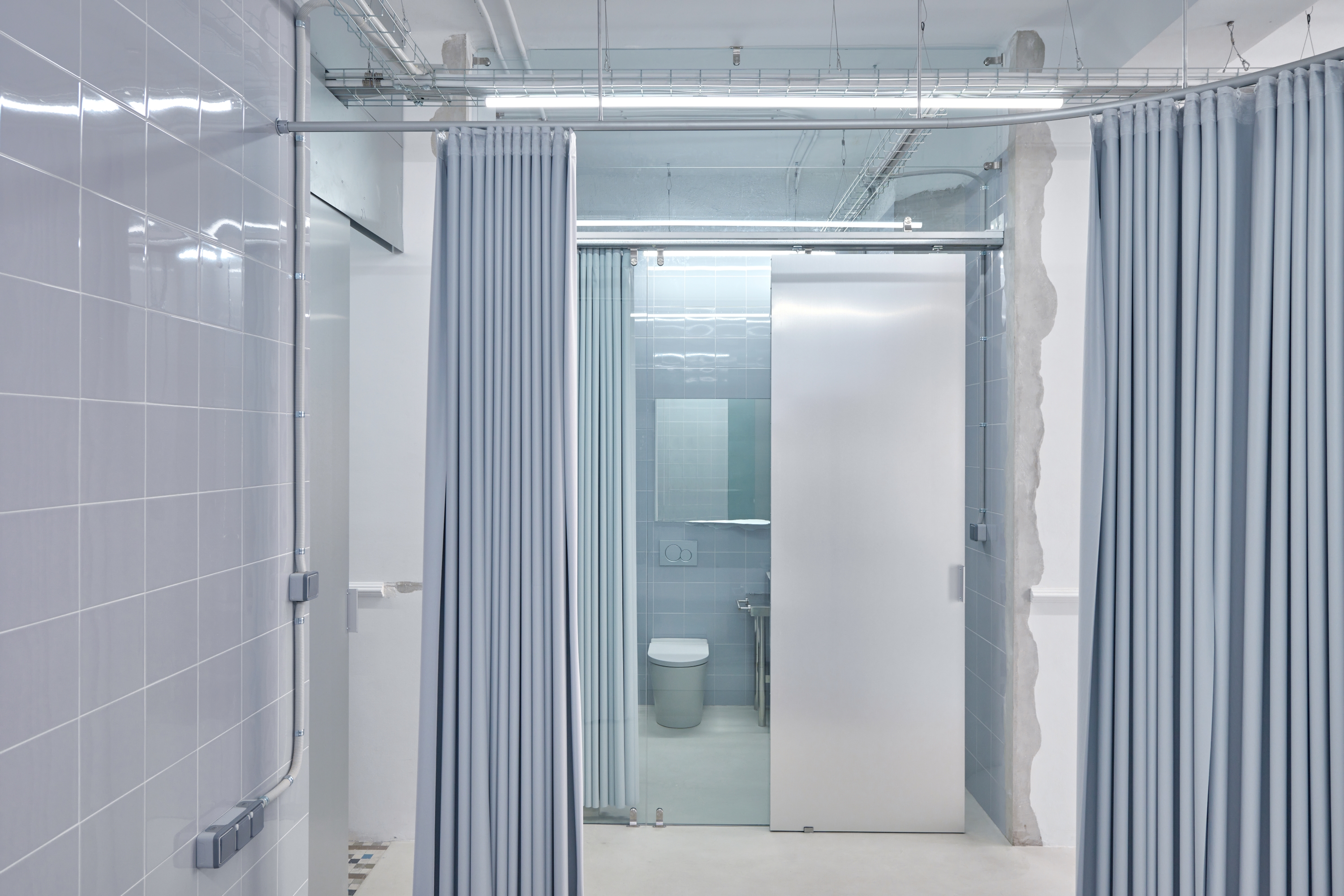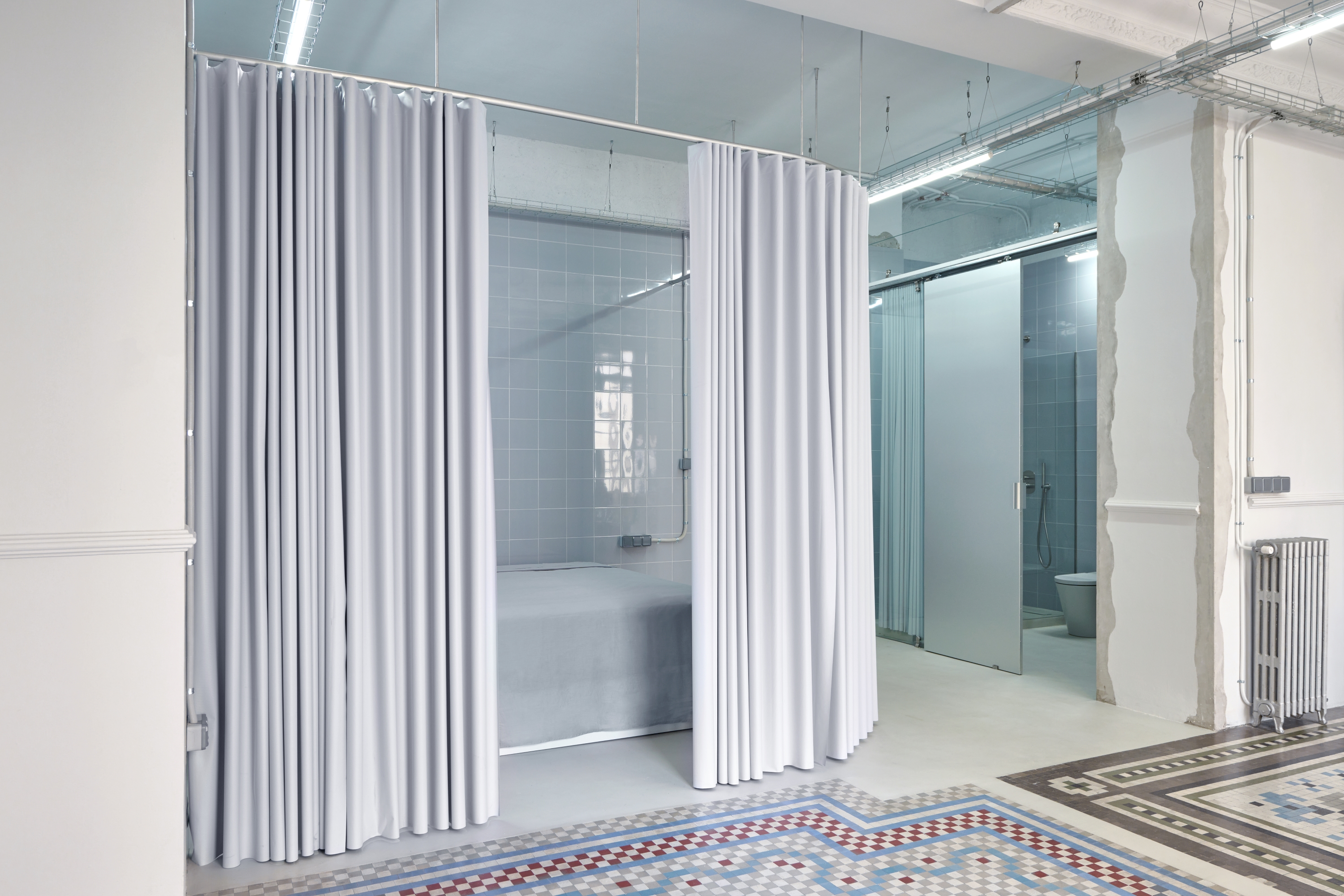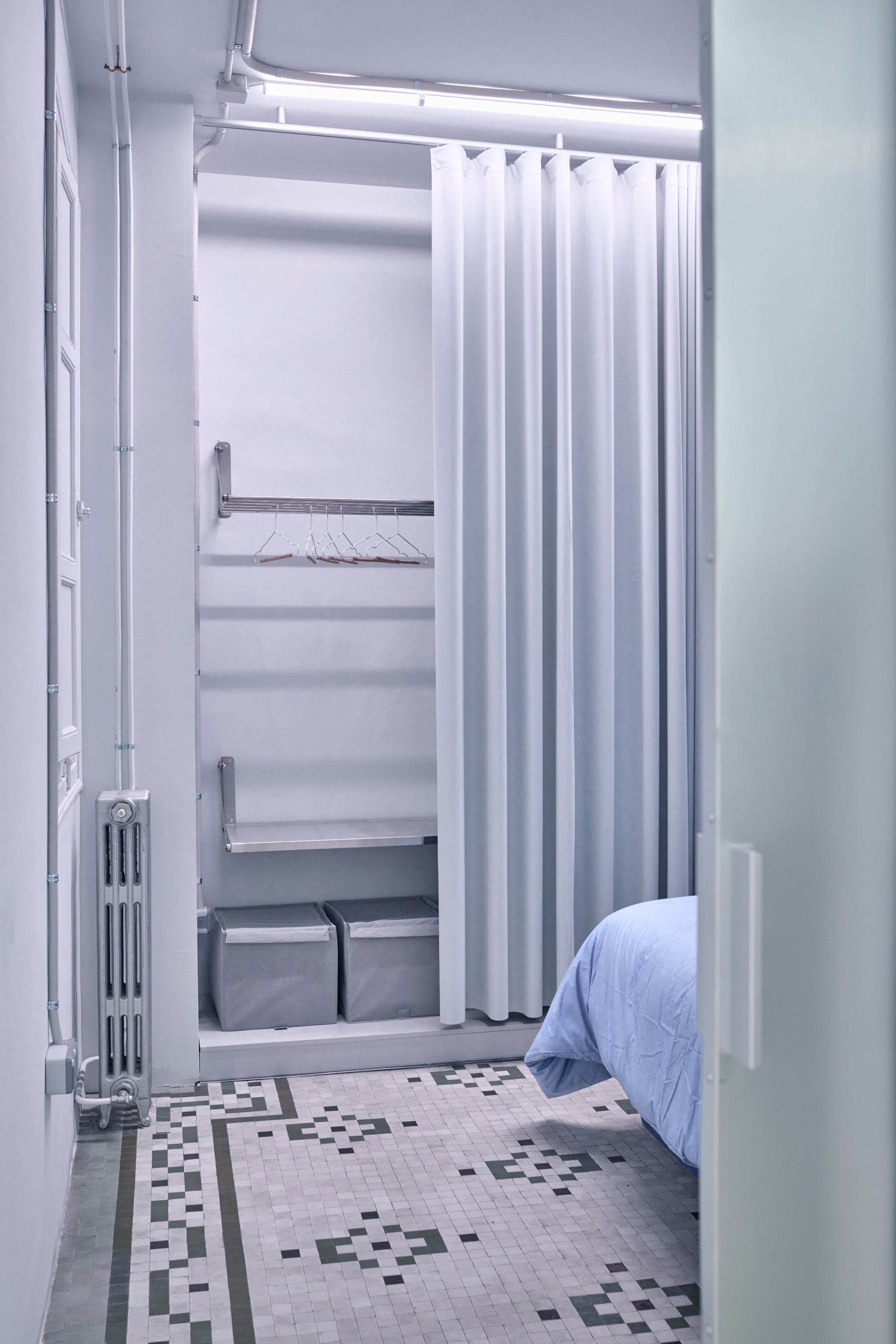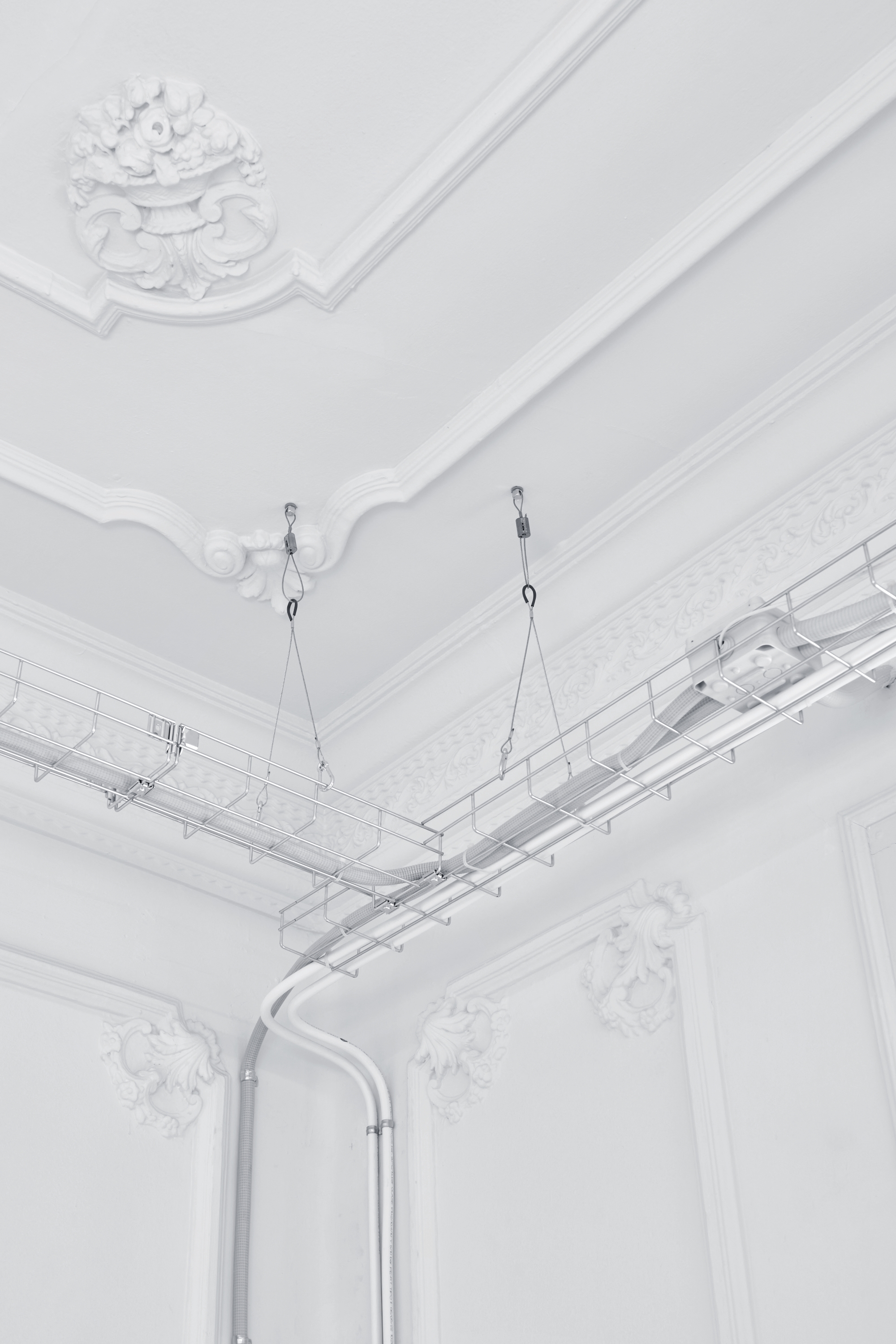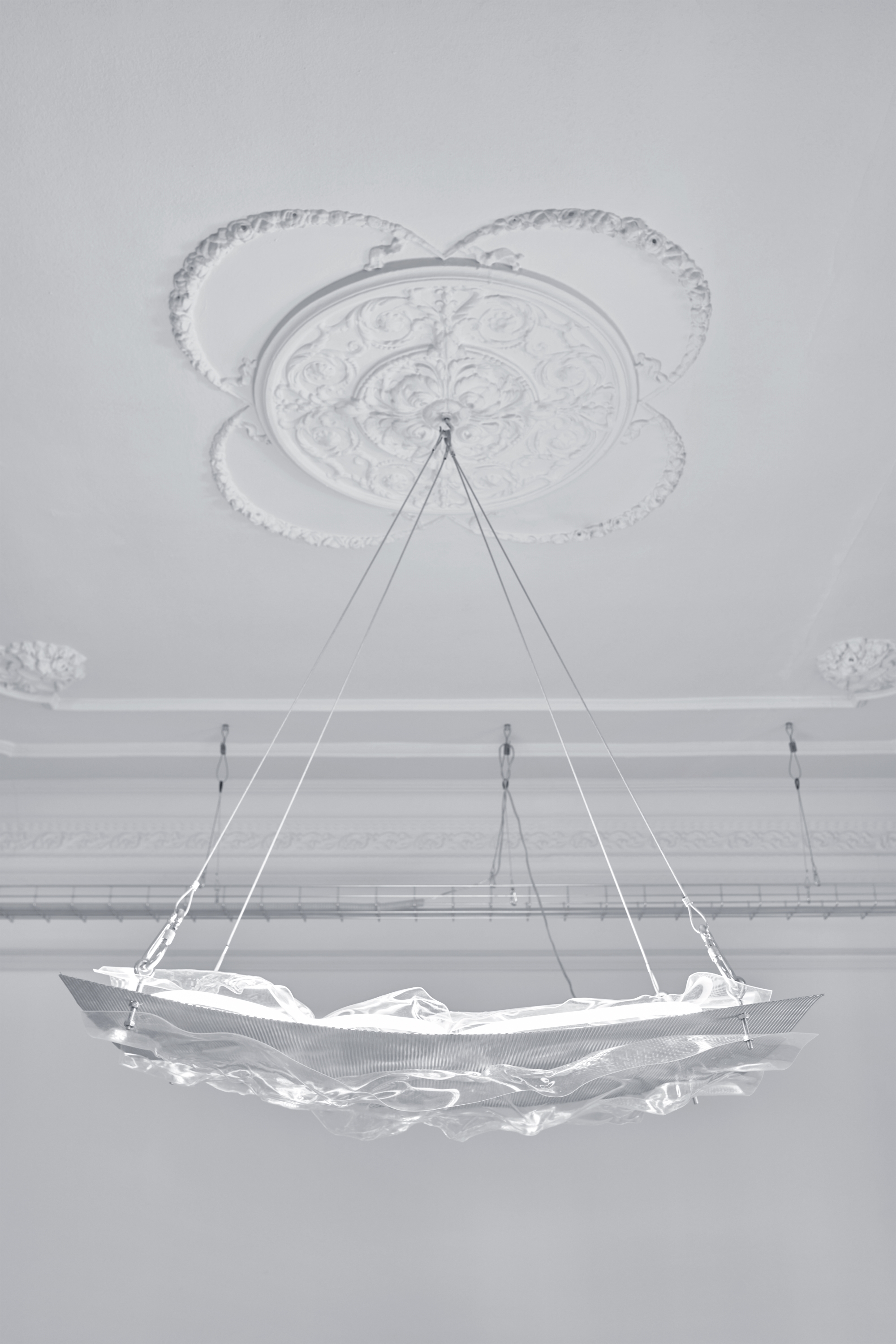![]()
POSTHUMAN CRAS IN A NEOCLASSICAL APARTMENT
Apartment renovation (2022)
In late 2021, an Unidentified Flying Object crashed into an old
neoclassical building in the heart of the city, causing extensive structural
damage with a deafening crash. The apartment was a work of architectural art.
It had high ceilings, large windows that overlooked an interior patio full of
tropical plants, and a beautiful bow window overlooking the Gran Vía avenue.
The mosaic floors and moldings decorated with classical motifs were impressive.
However, the spaceship had left its irreparable mark.
The kitchen and bathroom were completely destroyed. Many walls
of the apartment collapsed, opening up the space, illuminating it. Walls that
now had irregular cracks and unusual patterns as if they had been laser carved.
The ornamental moldings were smashed to pieces. Furniture in the apartment was
dragged and twisted by the force of the impact, and some was completely
destroyed.
![]()
![]()
At first glance, it looked like a conventional spaceship, but
when the scientists arrived to investigate the UFO, they discovered something
they had never seen before: There were no signs of life, a strange energy
emanating from the interior of the spacecraft. The ship was occupied by an
artificial intelligence, designed to explore space and find new ways of life.
The AI suffered a technical failure that had caused it to lose
control, and had finally ended up crashing into the neoclassical building. But
instead of shutting down, the AI had evolved, and was now exploring the human
world in a whole new way. It was beginning to merge with the damaged
neoclassical architecture, creating a kind of interdimensional space in which
walls and floors began to curve, opening up new perspectives. Now the space was
filled with glass and metal pieces that shone in the sunlight. The partitions
were replaced by layers of metal, glass and plastic curtains that would be
portals to other dimensions, reflecting and multiplying the hyperspace. Pieces
of the UFO were cast and laser cut to form doors, shelves, and pieces of
furniture. A network of metal trays began to spread across the ceilings of the
apartment, as a circulatory system for this new energy never seen before. A
circulatory system that illuminated the apartment artificially and regulated it
thermally.
![]()
This energy ended up creating a high-tech laboratory full of
advanced tools, cables and machinery to be able to experiment with new
anthropomorphic forms. The remains of a large piece of broken glass were his
working base. As he examined the equipment, he began to understand his new form
and his potential. The UFO began working in the laboratory, creating and
cooking new life forms and technologies that had never existed before.
The new way of living left an indelible mark on the architecture
of the apartment, interweaving past and future, neoclassicism and posthumanism,
traditional elements and advanced technology to create a new space-time, a new
inclusive and non-binary architecture that celebrated diversity. Life in the
neoclassical apartment was never the same after the UFO landing. The presence
of the posthuman being brought new ideas and perspectives, and opened the minds
of the residents to ways of living and thinking never before imagined. The UFO
became an icon for the community, and the AI within it became a symbol of
what might be possible in a post-human future. Though its origin and fate were
uncertain, the UFO and its occupant would always be remembered as an example of
how technology and humanity could come together to create something truly
amazing.
(This text has been generated by human-AI
collaboration)
![]()
![]()
A finales de 2021, un Objeto
Volador No Identificado se estrelló contra un antiguo edificio neoclásico en el
corazón de la ciudad, causando una gran cantidad de daños estructurales con un
estruendo ensordecedor. El apartamento era una obra de arte arquitectónica. Tenía
techos altos, grandes ventanales que daban a un patio interior lleno de plantas
tropicales y un precioso mirador a la Gran Vía de la ciudad. Los suelos de
mosaico y las molduras decoradas con motivos clásicos eran impresionantes. Sin
embargo, la nave espacial había dejado su huella irreparable.
La cocina y el baño
quedaron destruidos por completo. Las paredes del apartamento volaron por los
aires abriendo el espacio, iluminándolo. Paredes que ahora presentaban grietas
irregulares y patrones inusuales como si hubiesen sido tallados por láser. Las
molduras ornamentales se rompieron en pedazos.
Los muebles del apartamento
fueron arrastrados y torcidos por la fuerza del impacto, y algunos
completamente destruidos.
![]()
A primera vista, parecía
una nave espacial convencional, pero cuando los científicos llegaron para
investigar el OVNI, descubrieron algo que nunca habían visto antes: No había
signos de vida, una extraña energía emanaba del interior de la nave. La nave
estaba ocupada por una inteligencia artificial, diseñada para explorar el
espacio y buscar nuevas formas de habitar.
La IA había sufrido un
fallo técnico que la había hecho perder el control, y finalmente había
terminado estrellándose contra el edificio neoclásico. Pero en lugar de
desactivarse, la IA había evolucionado, y ahora estaba explorando el mundo
humano de una manera completamente nueva. Estaba comenzando a fusionarse con la
arquitectura neoclásica dañada, creando una especie de espacio interdimensional
en el que paredes y suelos comenzaban a curvarse abriendo nuevas perspectivas. Ahora
el espacio estaba lleno de vidrios y piezas metálicas que brillaban en la luz
del sol. Los tabiques eran reemplazados por capas de metal, cortinas de vidrio
y plástico que habrían portales a otras dimensiones, reflejando y multiplicando
el hiperespacio. Piezas del ovni eran fundidas y cortadas mediante láser para
conformar puertas, estantes y piezas de mobiliario. Una red de bandejas
metálicas comenzó a extenderse por los techos del apartamento, a modo de
sistema circulatorio de esta nueva energía nunca vista. Un sistema circulatorio
que iluminaba el apartamento de forma artificial y lo regulaba térmicamente.
![]()
![]()
Esta energía acabó
creando un laboratorio de alta tecnología lleno de herramientas, cables y
maquinaria avanzada para poder experimentar con nuevas formas antropomórficas.
Los restos de una gran pieza de vidrio quebrada eran su base de trabajo. A medida que examinaba los equipos, comenzó a
comprender su nueva forma y su potencial. El OVNI comenzó a trabajar en el
laboratorio, creando y cocinando nuevas formas de vida y tecnologías que nunca
antes habían existido.
La nueva forma de vida
había dejado una huella indeleble en la arquitectura del apartamento
entrelazando pasado y futuro, neoclasicismo y posthumanismo, elementos
tradicionales y tecnología avanzada para crear un nuevo espacio-tiempo, una
nueva arquitectura inclusiva y no binaria que celebraba la diversidad. La vida
en el apartamento neoclásico nunca volvió a ser la misma después del aterrizaje
del ovni. La presencia del ser posthumano trajo nuevas ideas y perspectivas, y
abrió la mente de los residentes a formas de vida y pensamiento nunca antes
imaginadas. El OVNI se convirtió en un icono para la comunidad, y la IA en su
interior se convirtió en un símbolo de lo que podría ser posible en un futuro
posthumano. Aunque su origen y su destino eran inciertos, el OVNI y su ocupante
siempre serían recordados como un ejemplo de cómo la tecnología y la humanidad
podrían unirse para crear algo verdaderamente sorprendente.
(Este
texto ha sido generado mediante la colaboración entre humano-IA)
![]()
![]()
photography by Luis Beltrán









